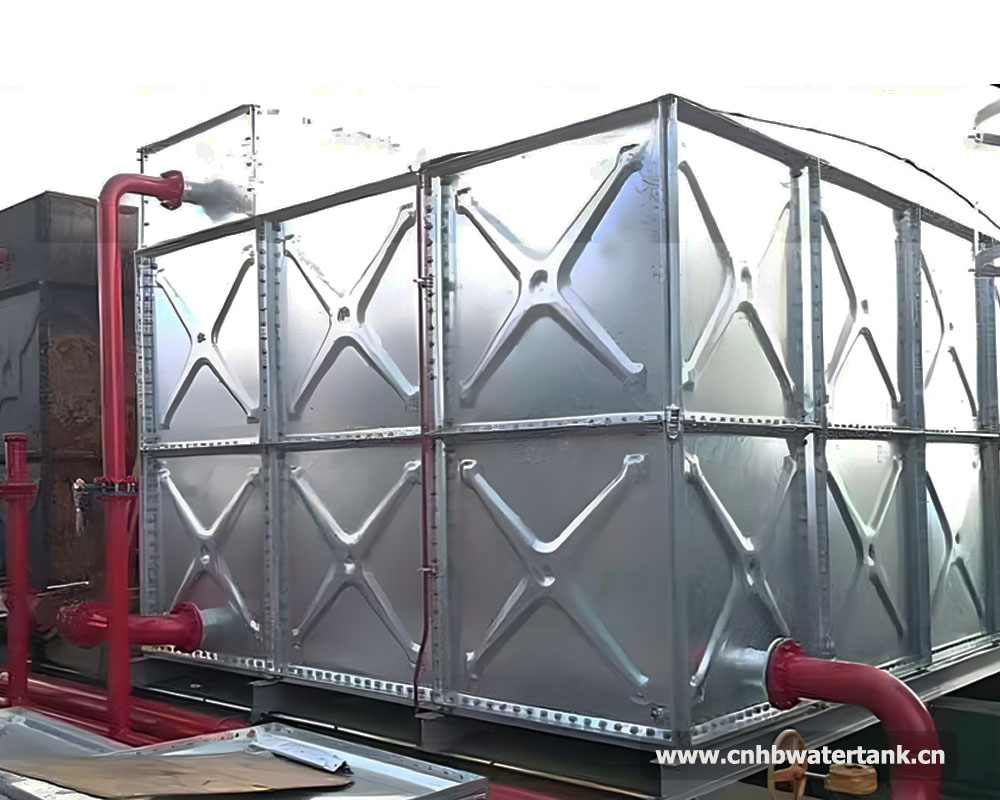Irrigation water storage tanks are essential for efficient water management in agriculture, landscaping, and gardening. They allow you to store rainwater, well water, or municipal supply for use during dry periods, reducing reliance on external water sources and lowering utility costs.
This guide covers key factors to consider when selecting the right water storage tank for irrigation.
Here we can supply you with below types of water storage tanks for your irrigation Water Storage Solution. Option 1 and Option 2 cost is almost same, but option 3 the cost is much more lower than option1.
Option1: GRP Water Tank

Option2: HDG Steel Press Panel Water Tank

Option3: HDG Corrugated Steel Sheets Round Water Tank

1. Determine Your Water Needs
Before purchasing a tank, calculate how much water you need:
- Crop or landscape area (in square feet or acres)
- Water requirement per plant or per acre (varies by crop type, climate, and soil)
- Irrigation frequency and duration
- Rainfall patterns in your region (to determine refill frequency)
👉 Tip: A general rule is to store enough water to last through 1–2 weeks of peak irrigation demand.
2. Choose the Right Tank Material
Different materials offer various benefits and drawbacks:
| Material | Pros | Cons | Best For |
|---|---|---|---|
| Polyethylene (Plastic) | Lightweight, UV-resistant, affordable, easy to install | Can degrade over time if low quality, may leach chemicals if not food-grade | Small to medium farms, residential use |
| Concrete | Durable, long-lasting, excellent for large volumes | Expensive, difficult to install, can crack | Large-scale agriculture, permanent installations |
| Steel (Galvanized or Coated) | Strong, long lifespan with proper coating | Prone to rust if coating is damaged, higher cost | Commercial farms, industrial use |
| Fiberglass | Corrosion-resistant, lightweight, durable | More expensive, can be damaged by impact | Areas with corrosive soil or water |
👉 Look for tanks labeled “potable” or “potable water safe” if using well or rainwater for edible crops.
3. Size and Capacity
- Small tanks (500–5,000 gallons): Ideal for home gardens, greenhouses, or small farms.
- Medium tanks (5,000–20,000 gallons): Suitable for medium farms or orchards.
- Large tanks (20,000+ gallons): Used in commercial agriculture or vineyards.
👉 Consider future expansion—it’s often more cost-effective to install a slightly larger tank now.
4. Tank Shape and Design
- Vertical tanks: Take up less ground space, higher water pressure (good for drip systems).
- Horizontal (cylindrical or bladder) tanks: Lower profile, easier to transport, good for under-greenhouse use.
- Bladder tanks (flexible): Portable, collapsible, ideal for temporary or seasonal use.
5. Location and Installation
- Above-ground vs. below-ground:
- Above-ground: Easier to install and maintain, but exposed to temperature changes and UV.
- Below-ground: Saves space, maintains stable water temperature, but more expensive to install and repair.
- Ensure the foundation is level and stable (e.g., compacted gravel or concrete pad).
- Consider access for delivery trucks and future maintenance.
6. Inlet, Outlet, and Overflow Features
- Inlet: Should accommodate your water source (rain gutter, pump, or hose).
- Outlet: Must connect to your irrigation system (drip, sprinkler, etc.). Bottom outlets are best for full drainage.
- Overflow pipe: Prevents flooding during heavy rain.
- Drain valve: Essential for cleaning and winterizing.
7. Filtration and Water Quality
- Use pre-filters (for rainwater) to remove debris.
- Consider first-flush diverters to avoid contamination from roof runoff.
- Algae growth can be minimized with opaque or dark-colored tanks.
8. Climate Considerations
- Freezing climates: Insulate tanks or use heated models to prevent ice damage.
- Hot climates: Use UV-protected tanks and consider shading to reduce evaporation and algae.
9. Regulatory and Environmental Compliance
- Check local regulations on rainwater harvesting and tank placement.
- Some areas require permits for large tanks or underground installations.
- Ensure the tank is BPA-free and FDA-compliant if used for food crops.
10. Budget and Warranty
- Prices vary widely based on size, material, and features.
- Look for long warranties (e.g., 10+ years for poly tanks).
- Factor in installation, delivery, and accessories (pumps, filters, stands).
Top Brands to Consider
- Norwesco – High-quality poly tanks
- Tank Depot / Patriot – Affordable and reliable
- Dura Tanks – Durable poly and steel options
- Contech – Specializes in stormwater and irrigation solutions
- Precision PolyTank – Made in the USA, NSF-certified
Final Tips
✅ Buy slightly larger than you think you need.
✅ Always use a filter with rainwater systems.
✅ Anchor tall tanks in windy areas.
✅ Regularly inspect for leaks, algae, and sediment.
✅ Winterize tanks in cold climates.
By carefully evaluating your water needs, site conditions, and budget, you can select the ideal irrigation water storage tank to support healthy crops and sustainable water use.
Inquiry please contact:
Email : cn@cnhbwatertank.cn
Whatsapp✆:+86 15350598856
Web: www.cnhbwatertank.cn
————————————————————————————————————————
“ Wish to be your best partner in China! Welcome to visit our company”
